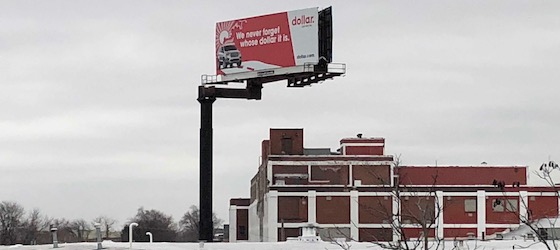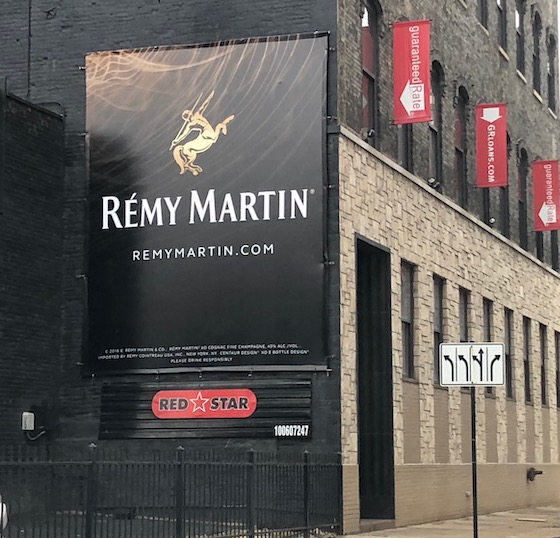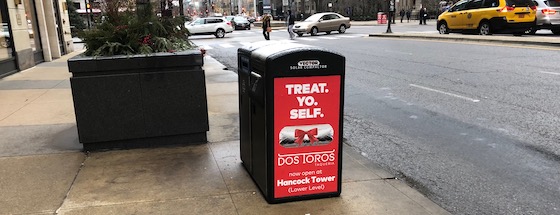Memo From Frank
In just two days, Americans will be glued to their televisions to watch the Super Bowl. We’ll find out who is the #1 team in the U.S. The Super Bowl is the culmination of a full football season of competition. Some people love the constant battle of a close opponent, but personally I like low competition. That’s what’s always been attractive about the billboard business. Few people even know it exists. The average American, although they pass by signs every day, never has given a second thought to the potential of billboards. So although I’ll definitely be watching the game in a couple days, I have no desire to be in a competitive field. A close game is great as a spectator (unless you’re betting on it) but it’s a lousy way to spend your business life. Low competition equals higher profits and an easier entry into the field.
How To Pick The Correct Billboard Structure Type And Configuration

While there are many different types and configurations of billboard signs, there are some basic questions that will help you determine the correct sign to build. Here is the methodology of questioning to ascertain the proper billboard to do the job.
What’s the budget?
How much are you willing to spend? Signs vary enormously in cost. A wooden telephone pole sign may cost $5,000 while a steel monopole might hit $50,000 or more. So the first question revolves around price. You can determine your budget simply based on estimating the ad revenue, multiplying by .6 and then seeing what amount of debt that will service over 5 to 10 years.
What are the bids?
Even once you come up with a rough idea of what you can afford, there’s still the issue of getting the bids in writing and seeing if you were right in your estimates. Sometimes you can get lucky and the sign fabricator has a used sign or a clever idea to lower the cost. But it can also be the other way around.
What’s going on under the sign?
Here’s where it gets even more complicated. Sometimes your billboard is going on raw land, and there’s nothing to worry about. But at other times the sign is on a developed property with a business beneath it with cars and people everywhere, and you have to worry about blocking doors and parking spaces. In those cases, you may be forced to build a monopole structure to minimize the obstructions.
How secure is the location?
What are the odds of the land being re-developed and you potentially losing your billboard lease? If it’s high, then you don’t want to invest a lot and you’re looking at a wooden sign. If there’s little chance of redevelopment then you can invest more money safely. Don’t forget that you can still move a steel monopole sign, but it costs like $10,000 to do so.
How big and how high does the sign need to be?
Wooden signs have height limitations. The poles are only so large in diameter (telephone poles) and that caps them at around 60’ or so. So if the sign is going to be enormously high, then a monopole or I-beam structure is the only possibility. And the larger the ad face, the more pressure on the columns and the greater reason to go with steel.
Conclusion
There is a methodology to building the correct billboard. This list will get your started in figuring it out.
How To Build A Highly-Profitable Inner-City Billboard Company

There are opportunities in the sign industry throughout the United States. But one area that is frequently overlooked are the many opportunities in the inner-city. So what are those niches?
8-sheets
These signs offer a great opportunity that comes from a failed business model. In the 1970s, the biggest advertisers on billboards were alcohol and tobacco firms. They invented a smaller monopole structure (about 5’ x 12’ in size) that they could place along busy city streets. Then, when tobacco and alcohol voluntarily withdrew from using billboards, these thousands of sign structures went vacant. The problem was that they were built to have the ads glued on like wallpaper, and no single advertiser could print ads like that. But the new invention of vinyl printing has made these useful again. You can buy abandoned 8-sheets for around $1,000 per structure, and rent the ad space for $200 to $400 per month per ad face (there are two ad faces on each unit).
Wallscapes
Here’s why this might work. Many cities want to re-invigorate the inner-city. Ads are considered an important part in bringing back economic excitement. Even cities like Dallas that banned wallscapes are now allowing them again. So you may be able to get exemptions from city codes if you ask. In addition, you may simply find legal locations where you can place the ad in vinyl on the side of a wall, as opposed to building a structure.
Abandoned signs
You can sometimes find abandoned billboards in many markets. These are signs that the owners left behind due to blockage, inability to rent the ad space, or a dispute with the landowner. Years later, these signs may have a ton of potential. Any time you see such a sign (no ad and even no ad face) you should contact the property owner and get the story. If the opportunity is there, agree to start paying the ground rent again in exchange for a 10 year or longer lease.
Other opportunities
As discussed in the article below, there are also other opportunities to place ads on a number of objects and venues that are not strictly billboard related. Billboards are only one component of the bigger industry called “out-of-home advertising”. So see if there are other concepts to profit from.
Conclusion
There are many great opportunities in the inner-city of many markets. This list will get your looking, and when you see the opportunity, you should aggressively try to tie it up under contract.
The Ultimate Billboard Boot Camp
![]() How to Find a Billboard Location
How to Find a Billboard Location
![]() How to Buy a Billboard
How to Buy a Billboard
![]() How to Build a Billboard
How to Build a Billboard
![]() How to Operate a Billboard
How to Operate a Billboard
![]() How to Rent Ad Space on a Billboard
How to Rent Ad Space on a Billboard
![]() How to Sell a Billboard
How to Sell a Billboard
Get Your Copy Now!
There’s No Limit On Out-Of-Home Advertising Ideas

When it comes to making money, the possibilities are endless in the “out-of-home” sector. “Out-of-home” advertising is the macro parent of the billboard industry, and includes everything from billboards to transit, mobile and mall advertising. So how can you build a dynasty out of the “out-of-home” business model?
Where do people congregate?
The first question is: where are there lots of people? Pedestrians or seated at some venue. Or cars (like a parking garage). Make a list of every place that you can go and find a lot of viewers. That’s the first rule of any good out-of-home concept – the sheer number of people who will see the ad. And be creative about it.
Is there something to affix an ad to?
Take that list and see where you could affix ads for these viewers to see. It could be on a wall, or on a fence or sign structure. What are the most visible areas of that venue? For example, the fence around the baseball field, or the wall that you turn in front of in a parking garage.
Who would you need a lease from?
Next you need to decide who owns the rights to that surface you want to place the ads on. And it’s not always the venue that you’re trying to reach. The wall by that event may not be owned by the event. It’s typically a private owner who does not even realize there’s any value to it.
What size and type of sign would you build?
Once you’ve identified the surface to mount the ads on, the next issue is what size and type of ad structure would you build? Maybe a vinyl that is mounted to the wall, or maybe a structure that is built over the entrance. Sketch some ideas.
What can you rent the ad space for?
Your concept has no value unless the advertisers can sell more merchandise than the ad costs. With that in mind, given the size of the crowd and the frequency that they gather, what can you price the ad at to make it a great value. To get a better handle on this, learn the prices of similar types of ads.
Is this concept scalable?
A great out-of-home concept has scalability – the ability to ramp it up to many similar venues. Those airport ads you see near the baggage carousels began with just one airport and then, after testing it, they brought it out in hundreds. That’s where the big money is. If you can come with a concept that makes just $5,000 per year and then launch that it 100 similar venues it’s a $500,000 per year income.
Conclusion
There’s more to life than just billboards. The out-of-home industry is vast, and works off the same exact principals and skills as billboard signs. When you see these type of opportunities, pounce on them.
Billboard Nostalgia: The Days Of The Pictorial Painter

While all billboard owners today are spoiled by being able to print anything they want on a sheet of vinyl, things were not that easy about 30 years ago. Until the late 1990s, any advertisement for a billboard had to be hand painted. And there is nothing harder to paint by hand than the human face. So, prior to the invention of vinyl printing, you had to hire out specialty painters to do such items as humans and food. These were called “pictorial painters” and were the best of the best when it came to painting signs. The rate was $5 per square foot, which is around $10 per square foot in today’s dollars, compared to about 85 cents per square foot to print on vinyl today. That’s why you see so few “photo” illustrations in old signs, as well as so many cartoon characters (since they were so easy to paint and did not require the costly “pictorial painter”. That’s why billboard owners never really think about the “good old days”, since it was so much harder and more costly to get ads up on signs back then.
